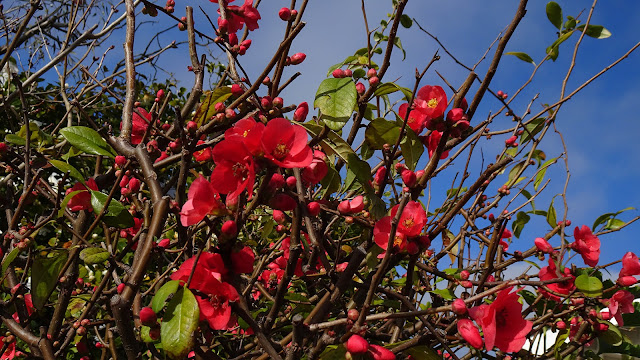Sunday, 31 July 2022
Saturday, 30 July 2022
WINTER WOOLIES
It was 0˚C this morning and everyone rugged up for their outing...
This post is part of the Saturday Critters meme
Friday, 29 July 2022
Thursday, 28 July 2022
VIOLETS
Wednesday, 27 July 2022
IVY BERRIES
Tuesday, 26 July 2022
CITY
At the crossroads of Elizabeth and Collins Sts in the City.
This post is part of the Travel Tuesday meme,
and also part of the Ruby Tuesday meme.
Monday, 25 July 2022
POWERFUL
and also part of the Blue Monday meme,
and also part of the Seasons meme.
Sunday, 24 July 2022
Saturday, 23 July 2022
FLYING FOX
Friday, 22 July 2022
Thursday, 21 July 2022
TURNERA
Wednesday, 20 July 2022
JACK FROST VISITS
We've been having very cold mornings and Jack Frost has left his calling card...
This post is part of the Wordless Wednesday meme,
and also part of the My Corner of the World meme,
and also part of the Nature Notes meme.
Tuesday, 19 July 2022
AT THE PARKLANDS
Winter sunshine and cold weather doesn't stop intrepid walkers from enjoying the views at the Darebin Parklands, in Alphington, inner suburban Melbourne.
This post is part of the Travel Tuesday meme,
and also part of the Ruby Tuesday meme.
Monday, 18 July 2022
MIDWINTER
and also part of the Blue Monday meme,
Sunday, 17 July 2022
HANGING ON
An Autumn leaf managing to hang on in there, right in the middle of our midwinter!
This post is part of the My Sunday Best meme
Saturday, 16 July 2022
SPOTTED DOVE
Friday, 15 July 2022
AT NIGHT
Thursday, 14 July 2022
JAPONICA
Wednesday, 13 July 2022
CALLERY PEARS
and also part of the My Corner of the World meme,
and also part of the Nature Notes meme.
Tuesday, 12 July 2022
Monday, 11 July 2022
MY ART
and also part of the Blue Monday meme,
and also part of the Seasons meme.
Sunday, 10 July 2022
Saturday, 9 July 2022
Friday, 8 July 2022
Tuesday, 5 July 2022
Monday, 4 July 2022
HIBERNATION
and also part of the Blue Monday meme,
and also part of the Seasons meme.




































